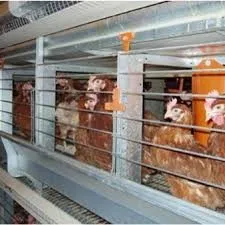fish feed milling machine
Oktoba . 06, 2024 05:28 Back to list
fish feed milling machine
The Importance of Fish Feed Milling Machines in Aquaculture
Aquaculture, the farming of fish and other aquatic organisms, has become a vital sector in meeting the global demand for seafood. As populations grow and diets shift towards healthier protein sources, the need for sustainable and efficient fish farming practices has gained significant attention. Central to achieving high productivity in aquaculture is the quality of the feed used, which is where fish feed milling machines play a critical role.
Fish feed milling machines are specialized equipment designed to produce high-quality feed tailored to the nutritional needs of various fish species. The process involves several steps, including grinding, mixing, and conditioning raw ingredients to create a balanced diet. This article aims to delve into the significance of these machines in aquaculture and how they contribute to the efficiency and sustainability of fish farming.
Understanding Feed Composition
Fish feed typically consists of a blend of proteins, fats, vitamins, minerals, and carbohydrates. These components must be carefully balanced to ensure optimal growth and health of the fish. The milling machine facilitates the grinding of raw materials, allowing producers to achieve the right particle size, which is crucial for fish digestion. For instance, smaller fish require finer feed particles, whereas larger species can consume coarser textures. A well-designed milling machine enables manufacturers to customize feed formulations to meet the specific needs of different fish species and growth stages.
The Milling Process
The production of fish feed involves several phases
1. Grinding Raw materials such as fish meal, soybean meal, and grains are processed through a hammer mill or roller mill. This step reduces the particle size, making nutrients more accessible for fish digestion.
2. Mixing After grinding, the various ingredients are blended to ensure uniformity. Advanced milling machines come equipped with automatic mixing functionalities, allowing for precise control over the proportions of each ingredient.
3. Conditioning This step involves adding steam and moisture to the mixture, which helps to activate the binders and improves the pelleting process. Proper conditioning is essential for the durability of the pellets, ensuring they do not disintegrate in water before fish can consume them.
fish feed milling machine

4. Pelleting The final phase of production involves extruding the conditioned mixture into pellet shapes. The size and shape of the pellets can be adjusted based on the target fish species, aiding in optimal feed consumption and reducing waste.
Benefits of Using Fish Feed Milling Machines
The integration of fish feed milling machines in aquaculture offers several advantages
- Improved Feed Quality High-quality feed leads to better fish health and growth rates. Milling machines enable consistent nutrient profiles and textures, ensuring that fish receive a balanced diet.
- Cost Efficiency Producing feed in-house allows fish farmers to save on costs associated with purchasing pre-manufactured feed. Additionally, by using local ingredients, aquaculture operations can reduce transportation costs and minimize their carbon footprint.
- Sustainability As the aquaculture industry faces increasing scrutiny over its environmental impact, the ability to produce sustainable feed becomes crucial. Fish feed milling machines can help optimize feed formulations, reducing waste and allowing for the use of alternative protein sources, such as insect meals or plant-based proteins.
- Customization Different species of fish have distinct nutritional requirements. The versatility of fish feed milling machines enables manufacturers to produce customized feed, taking into account the specific dietary needs of their stock.
Conclusion
In conclusion, fish feed milling machines are vital components in modern aquaculture, supporting the production of high-quality, nutritionally balanced feed that is essential for the health and growth of farmed fish. As the demand for sustainable seafood continues to rise, the importance of efficient, customizable, and environmentally friendly feed production will only become more pronounced. By investing in advanced milling technology, aquaculture operators can enhance their productivity and contribute to a more sustainable future for the industry. The journey of aquaculture depends significantly on the effective use of these machines, paving the way for innovation and growth in the sector.
-
High Performance Exhaust Fan – Efficient Ventilation Solutions for Home
NewsJun.10,2025
-
High-Quality Gestation Pen for Sows Durable Mobile Pig Pen & Simple Pig Pen Solutions
NewsJun.10,2025
-
High Quality Rabbit Cage Double Tier Designs & Welded Wire Mesh Supplier
NewsJun.10,2025
-
Floating Fish Feed Machine - High Efficiency Floating Fish Feed Extruder for Small Scale Production
NewsJun.10,2025
-
Premium Poultry Housing Solutions Mobile & Commercial Free Range Options
NewsJun.10,2025
-
Industrial FRP Fans Corrosion-Resistant Blades & Centrifugal Systems
NewsJun.09,2025






